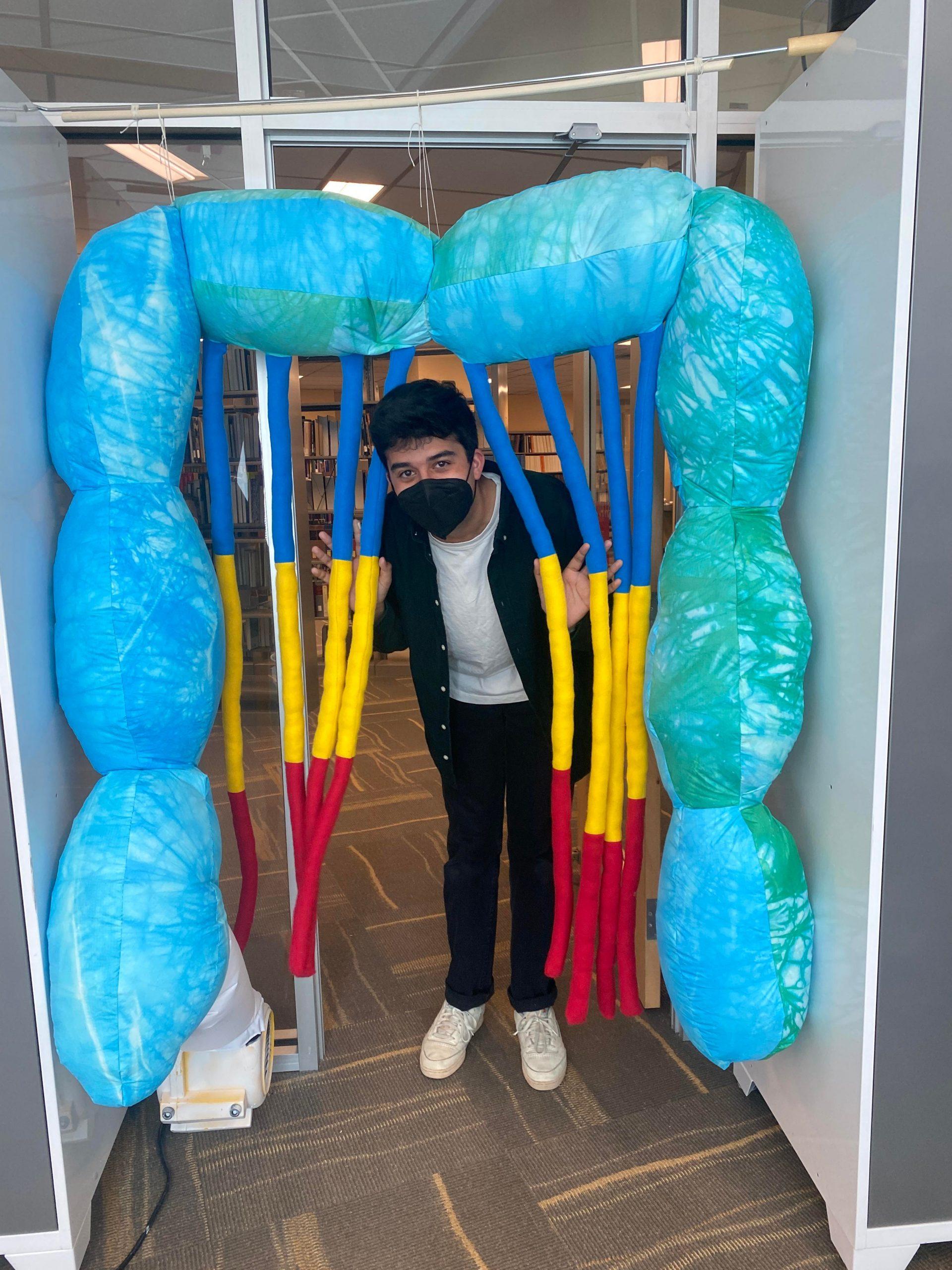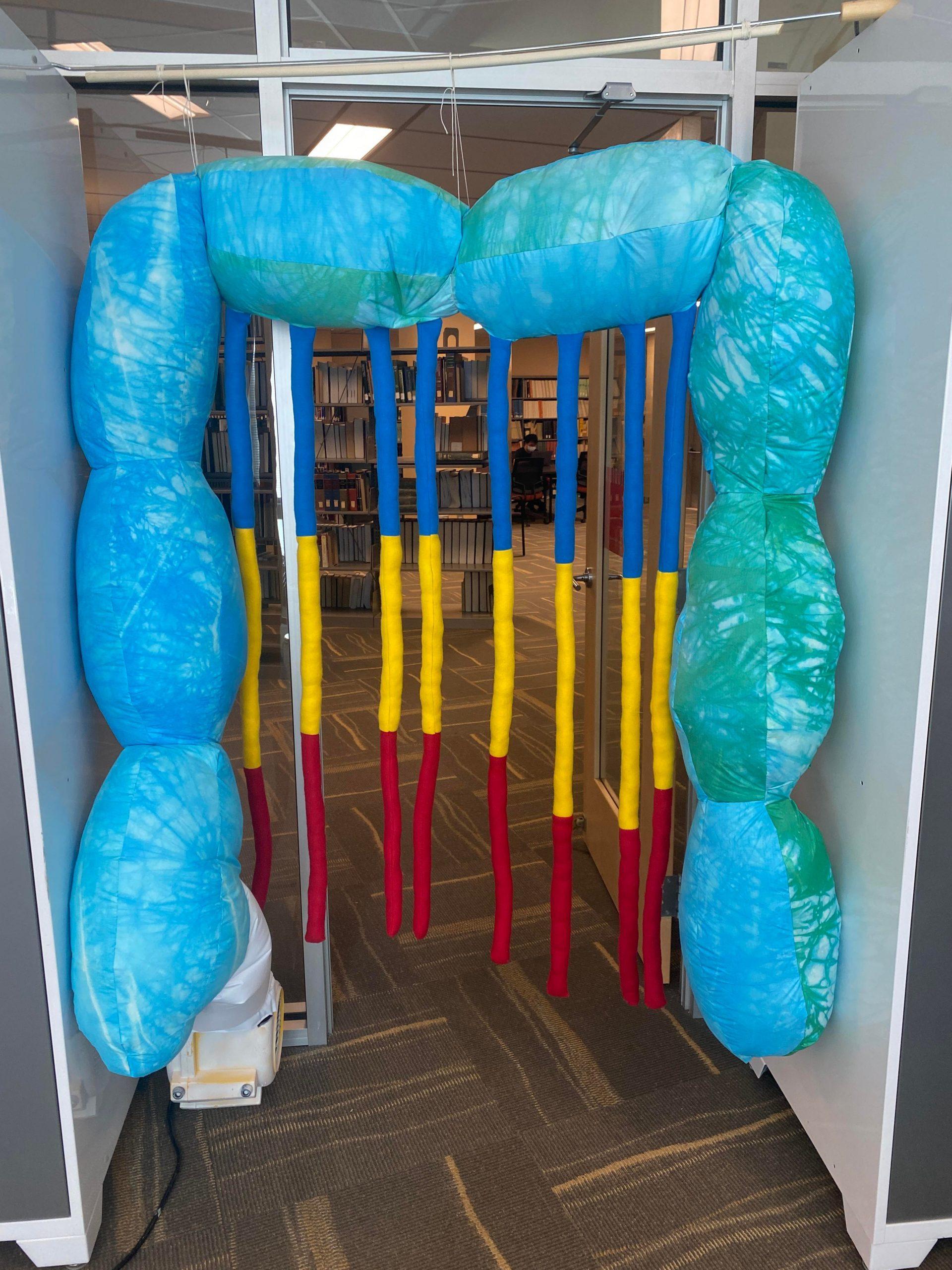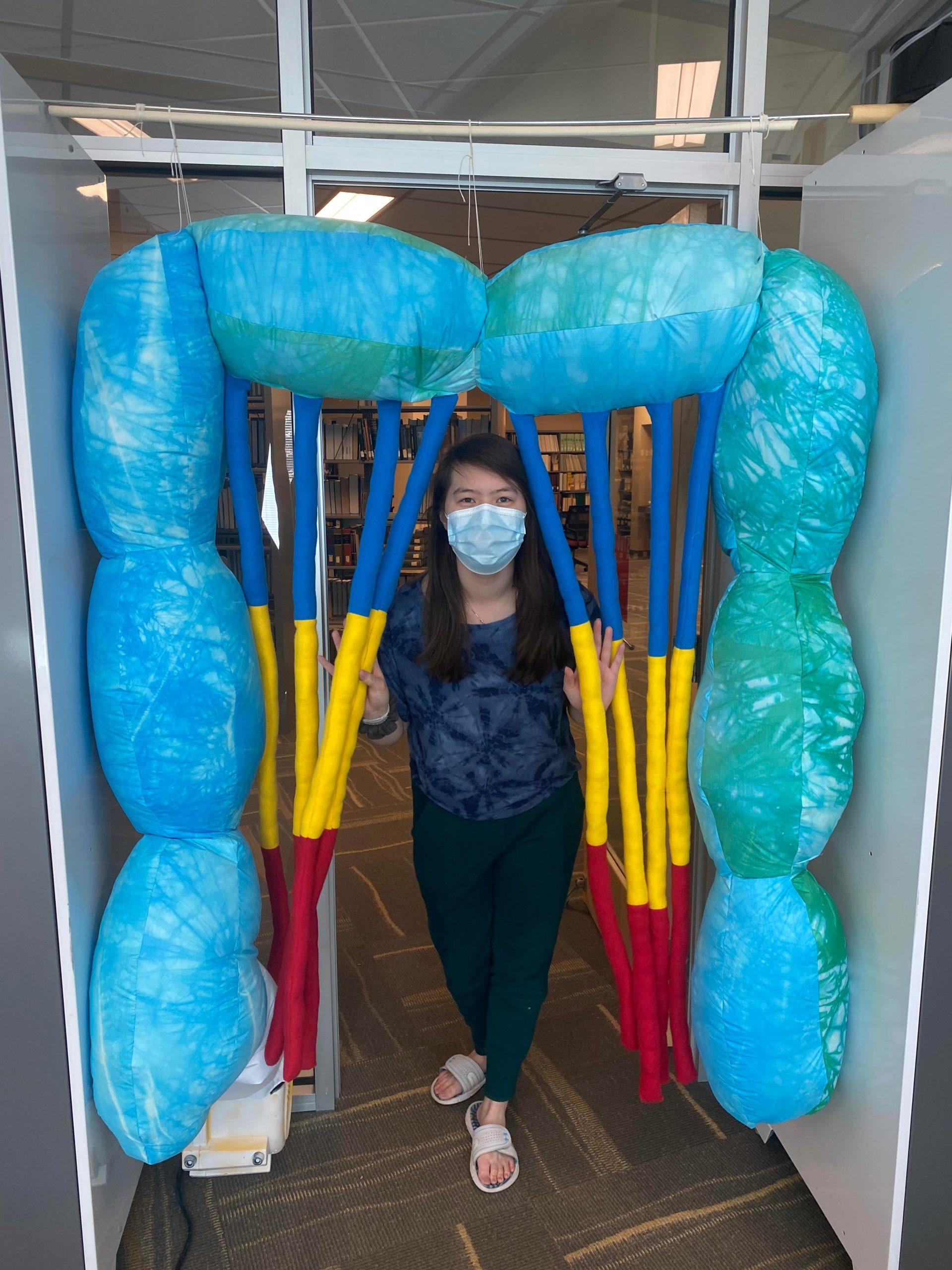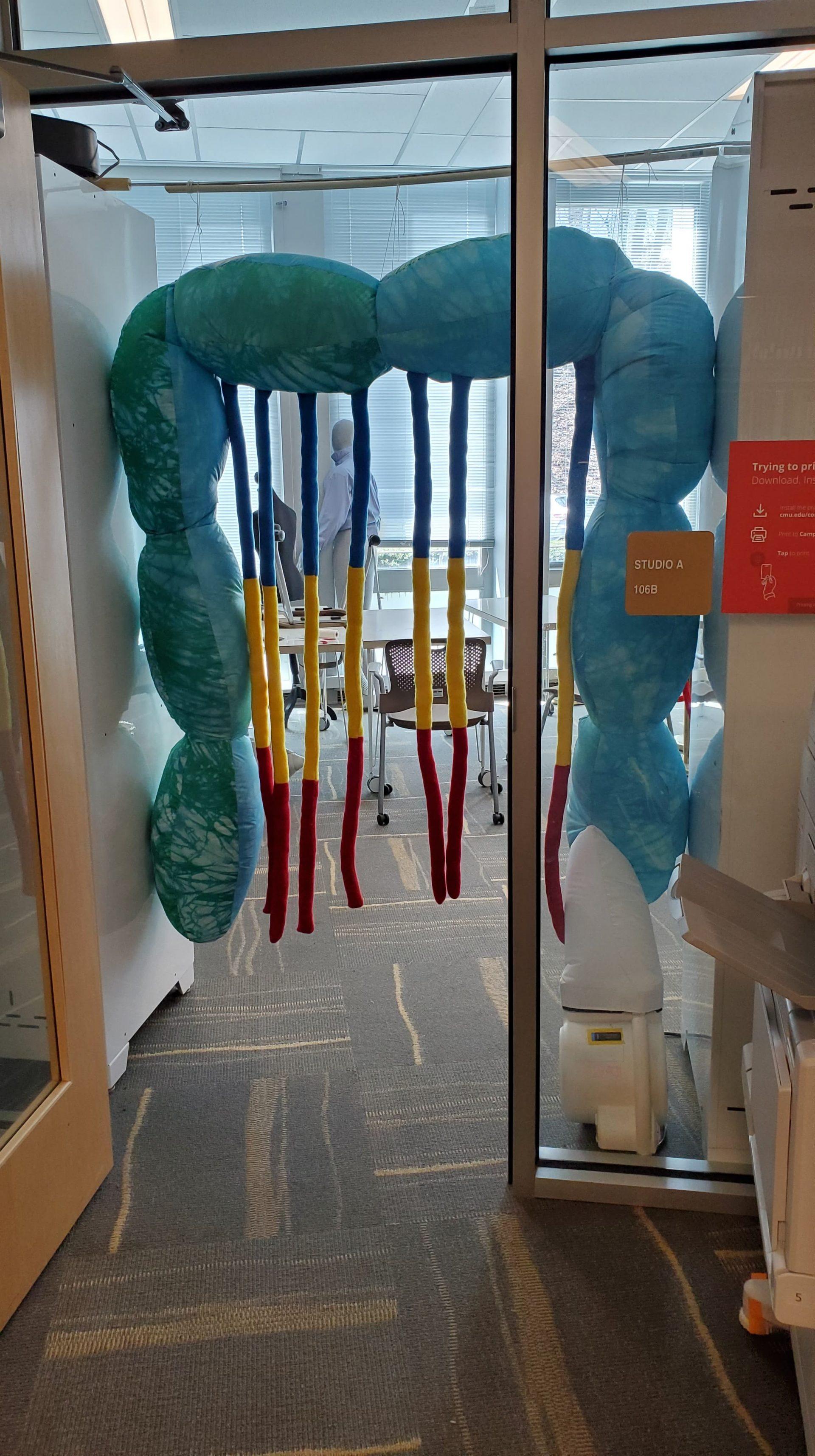We began this project by ideating different elements of our designs of our push/pull part 1 objects and how we could combine them. For this design, we combined the arms of Lori’s fruits with a modified version of the twists from one of Asad’s objects. We knew we wanted to make a piece that was interactive in some way, and we decided that an archway with hanging, movable components was the best way to provide an interactive experience while still within scope. Once we decided to make an archway, we were looking for locations to put our object where people could walk through it but it wouldn’t interrupt traffic flow. We found the doorway in Studio A and figured that it was the perfect spot to put our inflatable.
Our project was completed entirely asynchronously due to both of our crazy schedules before, during, and after spring break due to other commitments. As we designed our inflatable, we were mindful of designing an object that could easily be split into components that each of us could work on.
To create the archway, we first took the beach ball sphere pattern and enlarged it by extending the length of the pattern. After cutting out over 40 beach ball patterns, we then sewed the tops of one beach ball to the bottom of another beach ball with enough overlap so that there would be enough room in between each sphere to allow for airflow. After sewing vertical strips of connected spheres, we then sewed each vertical strip to create the bubbled effect of the elongated spheres when they finally came together.
To create the tendrils, we took inspiration from the arms of Lori’s fruits and created small cylinders of fleece. In the interest of using recycled or scrap materials, we cut rectangles from three different colors of fleece fabric – blue, yellow, and red, which were a bold contrast to the blue/green acid-dyed nylon. One of each of these rectangles were sewn together and flipped inside-out to form the long tendrils structures, and then stuffed with polyfil.
Because we were working asynchronously, the tendrils were added to the structure after the majority of the archway had been sewn. We learned that the tendrils were too heavy for the inflated arch to support alone, and so when we installed our piece in the final space, we used a rod and string to help carry some of the weight.
We found that people really enjoyed moving through the archway, and that the physical weight and softness of the fleece tendrils was particularly engaging for some. We are ultimately very happy with the interactivity and physicality of our final structure, and are proud of what we were able to accomplish working asynchronously.





